The worldwide spread of COVID-19 has changed our lives completely. Going out and interacting with other people has been strictly restricted. As a result, a significant transformation has occurred in our lifestyles across society, including staying in our homes for long periods and encouraging telework.
It's been a some time since we started to be in this cramped and unsettled situation. However, even before the COVID-19 outbreak, there have been professions that require such lifestyles. One example is an astronaut who carries out various tasks and experiments on the International Space Station (ISS) beyond the sky, approximately 400 kilometers from the Earth's surface. Many hints to overcome the COVID-19 pandemic are hidden in life in space, where there is no gravity and no one is free to go outside.
So, what can we learn from the experiences of astronauts? We report on a lecture that took place in the extreme cold of Sapporo in mid-January.
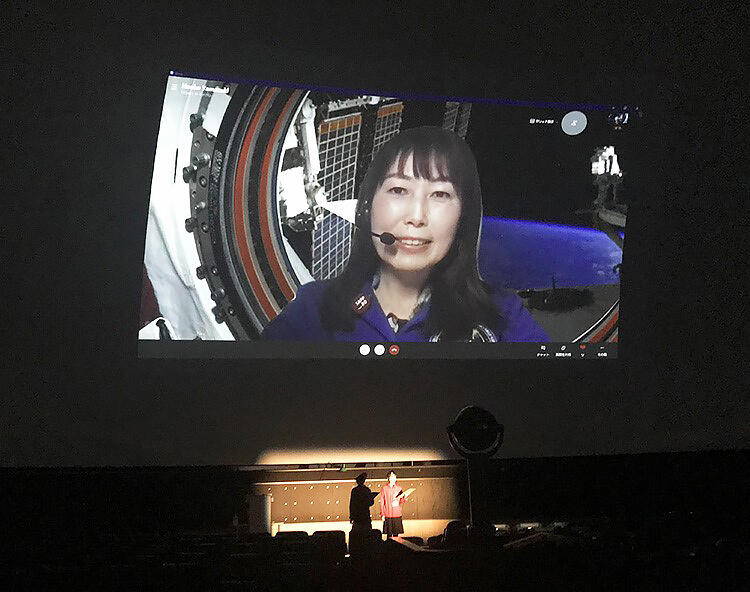
The sensors that perform well on the ISS
The lecture was held in the Sapporo Science Center in the City of Sapporo, and the lecturer was Naoko Yamazaki, the Center's honorary director. After completing graduate school at the University of Tokyo, she boarded the space shuttle Discovery in 2010 and stayed on the ISS for about two weeks. Her primary mission was to inspect the shuttle's fuselage and deliver cargo using the ISS' robot arm.
She is currently a member of the government's Committee on Space Policy. Since the COVID-19 pandemic became apparent, she has been actively sending out information as a person who has experienced the challenges of life in space. She gave this lecture remotely and sent a message to help overcome the challenges in our lives during the pandemic to younger generations, especially children, introducing topics related to life on the ISS and space.
The first topic that Ms. Yamazaki introduced was the "sensors" used to detect heat, sound, etc. on the ISS. Those sensors that perform well in diagnosing illness, including COVID-19, are indispensable for life on the station, not to mention in everyday life. There is a total of 350,000 sensors equipped on the ISS, including devices used for experiments and those that detect abnormalities.
These sensors are monitored by both astronauts and controllers on the ground and support the whole ISS facilities' function. According to Ms. Yamazaki, in recent years, due to the improved performance of these sensors, spacecraft that can be operated using touch panels are also being used practically.
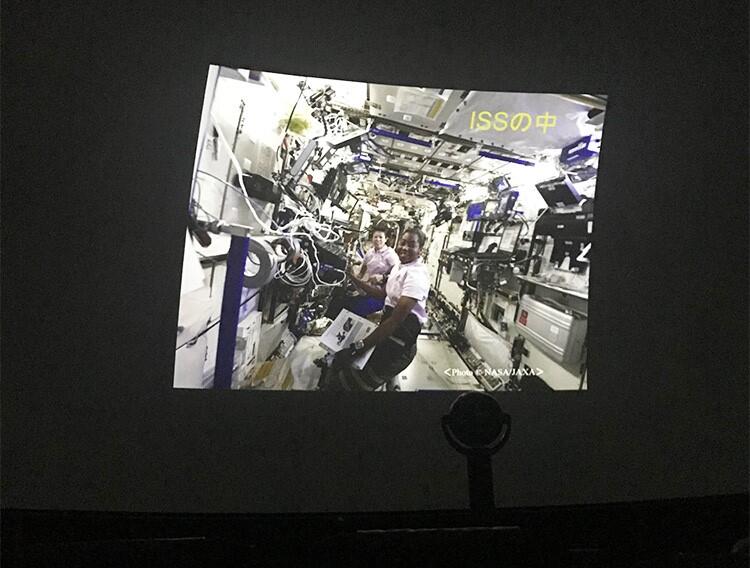
Spending time in a balanced manner
Then, how exactly, do astronauts live inside the ISS? Apart from the occasions when they spacewalk, they basically "can't go outside, can't open any doors, and are supposed to live with a fixed set of people in the same space" (Ms. Yamazaki). These conditions are similar to the self-restraint required during COVID-19 pandemic life in many ways. The astronauts have stored the wisdom required to spend time in such an environment.
One example is to enjoy a small change each day. Inside the ISS, the astronauts conduct experiments to grow plants for future space development. Ms. Yamazaki recollected that during her stay, "observing the way the plants grow each day helped me reset my feelings and internal time." She also said that having a daily routine, such as sunbathing in the early morning or writing a diary before going to bed, worked to create a daily rhythm. Spending time in a balanced manner, even in a life that tends to become monotonous, seems a critical point in common with the life during the COVID-19 pandemic.
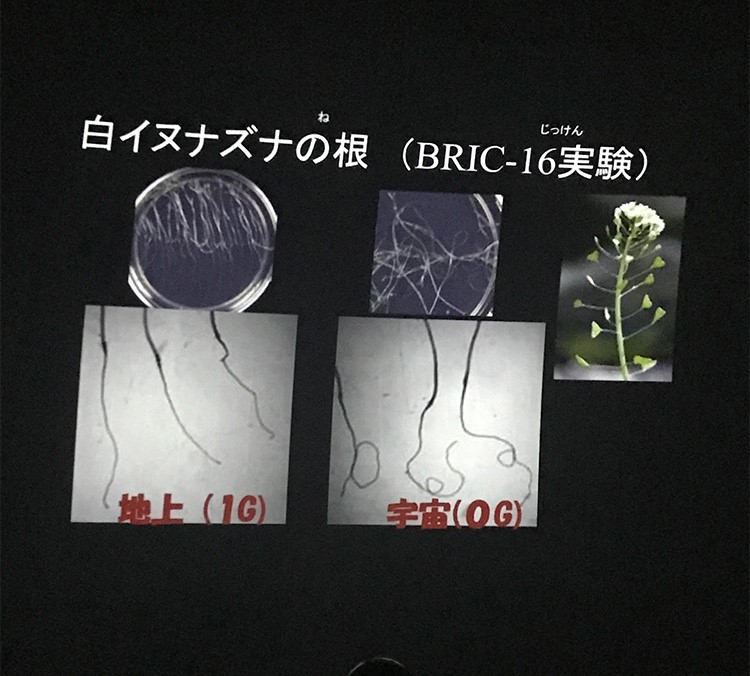
As for managing your physical condition, it is vital to exercise and move your body. There is no gravity in space, and we know this has many different effects on human bodies. One typical example is, "As a result of the loss of walking and running activities, the muscles, especially in the legs, become weak and thinner" (Ms. Yamazaki). Bone density also decreases in space, so it is necessary to maintain it through exercise under load stress. As written earlier, the similarity between living in self-restraint and living on the ISS is that we continue to live in a closed space. The same is true for the need for moderate exercise.
Cherishing what is 'normal'
In addition, Ms. Yamazaki mentioned thinking about things from the other person's perspective as an experience on the ISS that can be useful in the COVID-19 pandemic. It is a matter of common sense, but in space, what she said has another meaning. The concept of "direction," such as up/down or left/right with your feet on the ground, is meaningless. That is, you are required to talk and behave in a way that considers the other person's literal standing position. For example, "Please take the tool that is ABOVE you."
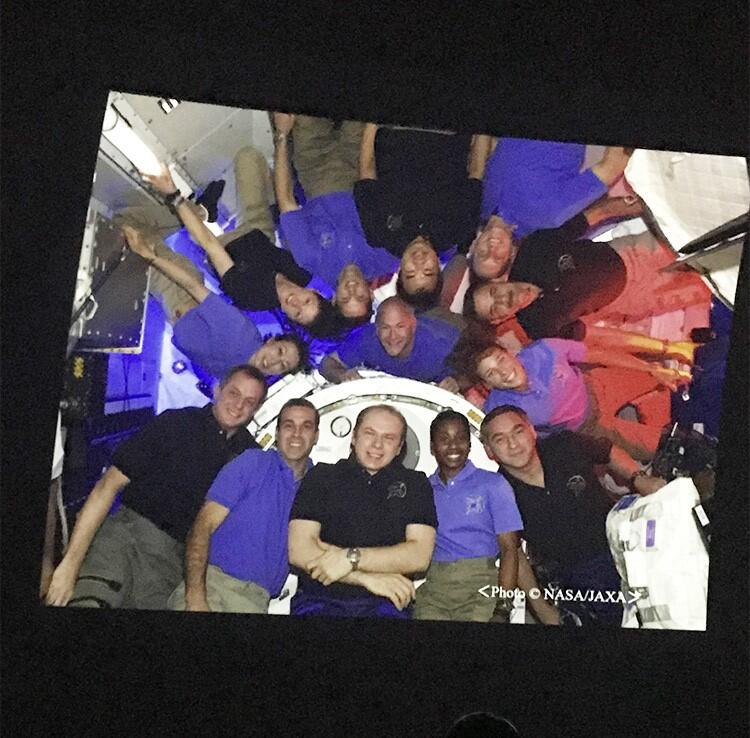
On the mental side too: It's apparent that we need to behave in a way attentive to the feelings of others. We recall Ms. Yamazaki saying, "The closer you get to an extreme situation, the more important it becomes to perform fundamental actions." The everyday life we once knew is now far away, but what is essentially necessary has not changed much in reality. We try to live comfortably with others following fixed rules in society. As an extension of this, there is the so-called "With Corona" and "Post Corona" life. That's what I realized at the lecture.
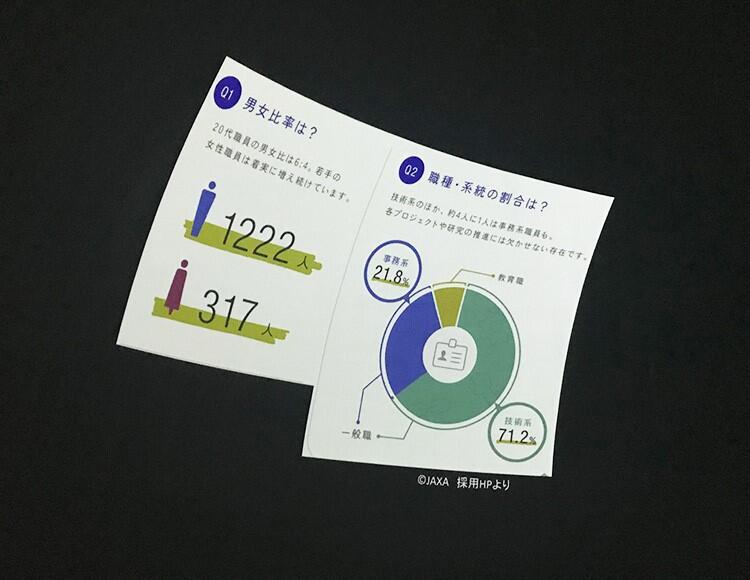
After the lecture, there was a Q&A session in which Ms. Yamazaki answered questions from participants. The photograph shows some of the answers to the questions she received about JAXA (Japan Aerospace Exploration Agency):
- What is the male-female ratio?
- What are the percentages of the types and categories of positions held?
(71.2% - Engineering) (21.8% - Administration) (7% - Education)
Original article was provided by the Science Portal and has been translated by Science Japan.




